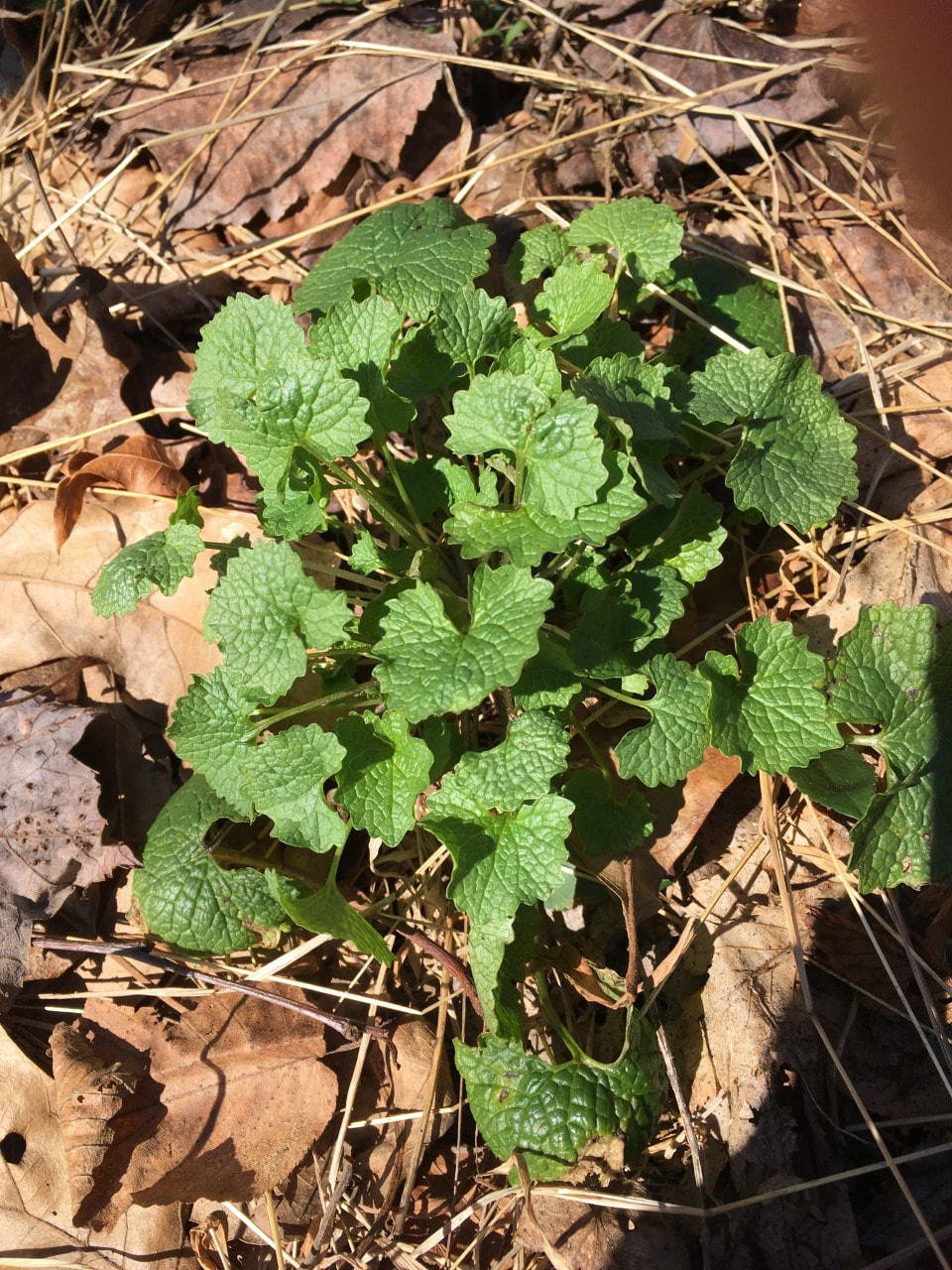One of the biggest offenders in our area is garlic mustard (Alliaria petiola), shown in the photo. This pernicious weed is native to Eurasia and was introduced in the mid 1800s. It has triangular, toothed leaves and tall stalks which produce small white flowers. It spreads its seeds far and wide by the wind and gains a foothold on roadsides and in fields and disturbed areas by emerging earlier in spring than many native plants. By the time native species are ready to grow, garlic mustard has blocked their sunlight and outcompeted them for moisture and vital nutrients. Additionally, garlic mustard is allelopathic, meaning that its roots release chemicals that inhibit or prevent the growth of surrounding plants. Needless to say, this is a plant you don't want in your landscape. Fortunately, it's fairly easy to pull, especially when it's first emerging in the spring.
By contrast, its lookalike golden ragwort (Packera aurea) is a lovely and obliging native plant. In early spring its leaves look quite similar to garlic mustard, but are more oblong and often have glossy purplish undersides. A central stalk with fat purple buds will emerge from the basal leaf cluster, eventually erupting into a cloud of yellow blooms. It's a carefree and rewarding groundcover for your garden--both for you and your pollinator friends!
Author, photo: Lisa Schneider


 RSS Feed
RSS Feed